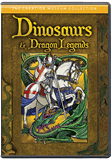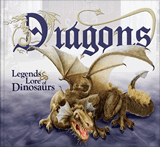Kids Feedback: What Happened to Megalodon and Other Sea Creatures?
Luis Alvaz, CC BY-SA 4.0, via Wikimedia Commons
This is actually a question from my 9 yr old son. He is constantly asking me things I cannot answer and his new obsession is the Flood & the animals. He wants to know why certain animals don’t exist now. Did the flood do something? For instance, the Megladon, why isn’t there one now, when Great Whites are a smaller version of it and they are still around? Are Great Whites possibly Megladons, changed over time (not evolution, just God-ordained change)? What about “dinosaur-type” animals, like Plesiosaurus or others like it? How did these water animals not survive the flood? My son constantly asks me questions like these. We are as active as we can be with AiG books,videos and such, but I just can’t seem to answer them all. I told him he should have asked Ken himself when we saw him last weekend. If there is an answer to this, we would love it. I have looked over the website and found a question about fresh/saltwater fish & their survival issues during the flood.
– G.C., Tennessee
Thanks so much for sending in all of your son’s questions! Let’s start with the general questions about flood survival. Your son was wondering if large “dinosaur-type” sea creatures survived the Flood. Some of these creatures did survive, but many also died. The Flood was incredibly turbulent and violent. Genesis 7:11 states, “In the six hundredth year of Noah’s life, in the second month, the seventeenth day of the month, on that day all the fountains of the great deep were broken up, and the windows of heaven were opened.” The flood waters and related geological catastrophes changed the entire planet, and we still see evidence of those changes today.
The mid-ocean ridges are evidence of the catastrophic plate movements during the Flood. This massive scar—the largest geological structure on earth—is a sobering reminder of God’s judgment on past sin.1
The following quotation, taken from the Answers magazine article “World Underwater,” describes possible destruction caused by the Flood.
In the 1980s, creation physicist John Baumgardner developed a theory for the rapid motion of the earth’s crust during Noah’s Flood. His theory suggested that, within a few short weeks, the crust beneath the pre-Flood oceans sank 1,800 miles (2900 km) to the base of the earth’s mantle. This suggests that continents moved rapidly during the Flood and that the Flood occurred thousands of years ago, just as the Bible suggests.2
Given the massive destruction caused by the Flood, it’s easy to see why many sea creatures did not survive. The fossil record confirms the massive destruction that took place during the Flood. Both land and sea creatures are found buried together in “fossil graveyards” throughout the world.2
However, many of the large “dinosaur-type” sea creatures did survive. The Bible describes both dinosaurs and large sea creatures existing after the Flood. Job 40:15-24 describes a dinosaur called behemoth, with a tail like a cedar tree. Job 41:1-34 describes a massive, fire-breathing sea creature called leviathan. There are also many legends and other accounts of human interaction with dinosaurs and dinosaur-like sea creatures after the Flood.3 Native Americans in Utah drew petroglyphs, or drawings, of dinosaurs.4
So why don’t we see sea creatures such as leviathan today? Some of the sea creatures that were common in pre-Flood oceans struggled to survive after the Flood. These creatures may have become extinct, or nearly extinct, due to factors such as climate change, food shortage, disease, predators, and even overhunting by humans. This continues to be a problem that we see today, with several animals on the edge of extinction.
Your son also had questions about megalodon and the great white shark. The megalodon was actually a very large type of shark. Just as we observe many types of sharks in our oceans today, megalodon was a type of shark that was very common in pre-Flood oceans. In fact, megalodon could possibly still exist today!
The largest known carnivorous fish to have inhabited the sea is the Carcharodon megalodon. Based on the discovery of huge fossil teeth, scientists believe the megalodon (which means giant tooth) was a huge shark that could have been up to 17m (60 feet) or longer (nearly twice as long as a Great White) . . . . Several alleged eyewitness sightings of enormous sharks over the years suggest these colossal creatures may still inhabit our ocean depths. This would sit comfortably with the Bible, but less so with evolutionary ideas.5
I hope this answers all of your questions. For more information, please read the following articles:
Parents, if your children have any questions, please submit them using the “contact us” section on our main website.
Footnotes
- Joe Francis, “Deep-Sea Vents—Life’s Toxic Sanctuary,” Answers 5, 3. https://answersingenesis.org/biology/microbiology/deep-sea-vents-lifes-toxic-sanctuary/.
- Answers in Genesis, “World Underwater,” Answers, 3, 4. https://answersingenesis.org/the-flood/global/world-underwater/".
- “What Will You Do With the Dinosaurs?”, Answers in Genesis, https://answersingenesis.org/dinosaurs/what-will-you-do-with-dinosaurs/.
- Andy McIntosh, “Utah’s Testimony to Catastrophe,” Answers 2, 2. https://answersingenesis.org/geology/natural-features/utahs-testimony-to-catastrophe/.
- Paula Westom, “Sharks: Denizens of the Deep,” Creation ex nihilo, 23(2), https://answersingenesis.org/aquatic-animals/fish/sharks-denizens-of-the-deep/.
Recommended Resources
- © 2024 Answers in Genesis
- Privacy Policy
- Contact
- About




